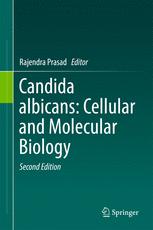

Most ebook files are in PDF format, so you can easily read them using various software such as Foxit Reader or directly on the Google Chrome browser.
Some ebook files are released by publishers in other formats such as .awz, .mobi, .epub, .fb2, etc. You may need to install specific software to read these formats on mobile/PC, such as Calibre.
Please read the tutorial at this link: https://ebookbell.com/faq
We offer FREE conversion to the popular formats you request; however, this may take some time. Therefore, right after payment, please email us, and we will try to provide the service as quickly as possible.
For some exceptional file formats or broken links (if any), please refrain from opening any disputes. Instead, email us first, and we will try to assist within a maximum of 6 hours.
EbookBell Team

0.0
0 reviewsThis book on Candida albicans and similar pathogens provides a timely overview of the groundbreaking discoveries made in the areas of drug resistance, host–pathogen interactions, virulence, host immune system modulation, etc., in the last two decades.
This comprehensive 2nd Edition includes chapters on fungal infections, hyphal morphogenesis, molecular mechanisms of antifungal resistance, antifungal agents, multidrug transporters, virulence mechanisms in Candida albicans, host–pathogen interactions, the cell wall, fungal biofilms, lipids and antifungal resistance, signaling mechanisms and last but not the least host-immune responses. As such, it offers an ideal reference guide for mycologists, researchers, pharmacists, clinicians, and undergraduate students engaged or interested in fungal research. It will also benefit clinicians, who are required to keep abreast of the current state of research on antifungal drug resistance and antifungal development.